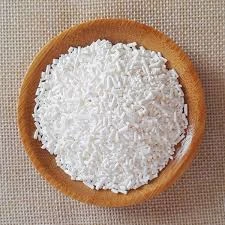
e128 food additive
Understanding E128 Insights into the Food Additive
In the world of food production and preservation, additives play a significant role in enhancing flavors, textures, and appearances of various products. One such additive is E128, also known as Red 2G or Red 128. As a synthetic dye, E128 is used primarily to impart a vibrant red hue to food items, making them more visually appealing to consumers. This article delves into the nature of E128, its uses, safety concerns, and the regulatory frameworks surrounding its application.
What is E128?
E128, or Red 2G, is a synthetic azo dye derived from petroleum products. Azo dyes are characterized by the presence of one or more azo groups (-N=N-), which contribute to their striking colors. E128 is particularly valued in the food industry for its ability to withstand high temperatures and maintain its color stability during processing. Its applications are widespread, including use in products like sausages, canned foods, confectionery, and beverages, where a rich red hue can enhance the visual appeal and consumer acceptance.
Uses in Food Products
The use of E128 is predominantly found in processed foods. It is often used in meat products such as sausages and hams to give them a fresh, appealing color, which is especially important in the meat industry, where color can significantly influence consumer purchasing decisions. E128 can also be found in dairy products, sweets, and alcoholic beverages, providing a consistent and stable color that appeals to the eye.
However, it is essential to note that the use of E128 is not without controversy. Its synthetic origin and potential health impacts have raised questions among health professionals, leading to increased scrutiny over its safety.
Safety Concerns
e128 food additive

E128 has been the subject of various studies examining its safety for human consumption. Concerns primarily revolve around its classification as a synthetic dye, with potential links to allergic reactions and hyperactivity in children. Additionally, some studies have suggested that long-term consumption of azo dyes, including E128, could be associated with certain health risks, including carcinogenic effects.
Due to these concerns, regulatory bodies across the globe have established guidelines and limits for E128's use in food products. In the European Union, for instance, E128 is permitted, but it must comply with strict safety assessments by the European Food Safety Authority (EFSA). On the other hand, E128 is banned in some countries due to the apprehensions surrounding its safety.
Regulatory Framework
The regulation of food additives, including E128, varies significantly from one region to another. In the European Union, food additives must adhere to strict regulations under the EU Food Additives legislation, which assesses the safety and acceptable daily intake (ADI) of these substances before they can be approved for use.
In the United States, the Food and Drug Administration (FDA) regulates food additives through a different framework. While E128 is not specifically listed as an approved color additive, many azo dyes, including similar compounds, are permitted under certain conditions. This inconsistency in regulatory approaches further complicates the landscape for consumers and manufacturers alike.
Conclusion
E128 remains a popular additive in the food industry, renowned for its ability to enhance the color of various products. However, its synthetic nature and associated health concerns necessitate careful consideration in its usage. With varying regulations worldwide and an ongoing discourse on consumer safety, it is crucial for both producers and consumers to stay informed about food additives. Awareness and understanding of additives like E128 will empower consumers to make better choices regarding their food consumption, promoting a healthier and more transparent food environment overall.
-
Pure Sodium Dichloroisocyanurate Dihydrate | Powerful DisinfectantNewsAug.29,2025
-
Industrial Chemicals: Quality & Purity for Every IndustryNewsAug.28,2025
-
Nitrile Rubber Honoring Strict Production StandardsNewsAug.22,2025
-
Aspartame Ingredients Honoring Food Safety ValuesNewsAug.22,2025
-
Fertilizer for Balanced Plant NutritionNewsAug.22,2025
-
Cyanide Gold Processing with High Purity AdditivesNewsAug.22,2025
-
Formic Acid in Textile Dyeing ApplicationsNewsAug.22,2025
Hebei Tenger Chemical Technology Co., Ltd. focuses on the chemical industry and is committed to the export service of chemical raw materials.
-

view more DiethanolisopropanolamineIn the ever-growing field of chemical solutions, diethanolisopropanolamine (DEIPA) stands out as a versatile and important compound. Due to its unique chemical structure and properties, DEIPA is of interest to various industries including construction, personal care, and agriculture. -

view more TriisopropanolamineTriisopropanolamine (TIPA) alkanol amine substance, is a kind of alcohol amine compound with amino and alcohol hydroxyl, and because of its molecules contains both amino and hydroxyl. -

view more Tetramethyl Thiuram DisulfideTetramethyl thiuram disulfide, also known as TMTD, is a white to light-yellow powder with a distinct sulfur-like odor. It is soluble in organic solvents such as benzene, acetone, and ethyl acetate, making it highly versatile for use in different formulations. TMTD is known for its excellent vulcanization acceleration properties, which makes it a key ingredient in the production of rubber products. Additionally, it acts as an effective fungicide and bactericide, making it valuable in agricultural applications. Its high purity and stability ensure consistent performance, making it a preferred choice for manufacturers across various industries.





